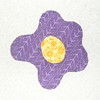
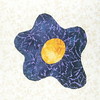
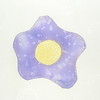
I made five blocks using three different techniques (with one variation) and three different stitches on the machine and took photos along the way. You can view my step-by-step photos with commentary on Flickr in my set Notes for Machine Appliqué Posies. I'll also go through them here--to make it easier to print them off for reference. As always, all the images are clickable for a larger image.
ABOUT THREAD AND STITCHES
Using these techniques, there will be nice, turned under edges on the appliqué. You want the nice edge to be the feature, not the thread. Use a clear (or smoke) mono-filament or mono-poly or thread in a matching color.
Three kinds of machine stitches work well with these techniques.
- Blind Hem Stitch - when using this stitch, the straight stitches go into the background at the applique edge, then the zig stitch comes into the appliqué.
- Zig-Zag Stitch - this is an open zig zag, not a heavy satin stitch. Use this stitch On the applique, at the edge.
- Straight Stitch - even IF your machine only sews a straight stitch, you can still do machine appliqué. In fact, Jane Sassaman recommends using a straight stitch to highlight the nice turned under edge.
First, two things about backgrounds.
- For all three of the methods here, take a minute and starch the background squares. I usually spray the fabric pretty heavily, wait for it to soak in a bit, then press and repeat.
- Applique sometimes pulls the background in a bit, so start with a background square a little larger then you need and square up after the block is complete. For Posy blocks for the lotto, I started with 9-inch squares and squared them up to 8.5 inches for a block that will finish at 8 inches.
In this method, you'll add a facing to the applique piece. I used a lightweight interfacing with fusible on ONE SIDE ONLY (Pellon's Featherweight). You could use an interfacing with no fusible or lightweight washaway stabilizer. Some use USED dryer sheets--if you decide to go this route, Debbie Kravotil suggests putting them through the wash one more time to make sure the softener chemicals are out.
- Trace the shape of your flower onto the non-fusible side of the interfacing. (the interfacing can be a rough cut square that is larger than the flower pattern--with room for seam allowance all the way around.
- Lay the fabric right side up on the table and position the interfacing on top, fusible side down.
- Sew along your drawn line--ALL the way around. Trim the fabric and interfacing away 3/16-1/4 outside your seam. Clip any inside curves in the seam allowance.
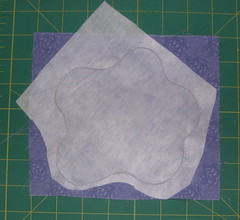
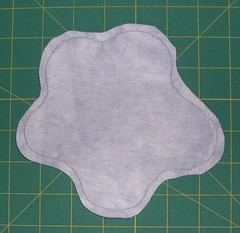
- Carefully slit the interfacing and turn your flower. Use your finger or other blunt tool to make sure the edges are completely turned and nice and smooth. If you used interfacing with fusible, DO NOT PRESS.


- Prepare the center in the same way



Your appliqué pieces are ready to go.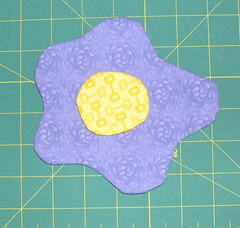
- Center the flower on the background square. If you are using single-sided fusible, you can press the flower onto the background --this will fuse it in place. Otherwise, pin it.
- Stitch around the flower. If you are using an open zig-zag, the stitch will be ON the flower, zigging onto the background. If you are using a blind hem, you'll be stitching on the background right next to the flower and the stich will take a bite into the flower. If you are using a straight stitch, you want to stitch very close to the edge.
- Flip your block over and cut away the background behind the flower, leaving a generous 1/4 inch.
- Add the center of the flower in the same way. Fuse and sew the center to the Flower fabric. Flip it over and trim away the flower fabric behind the center.

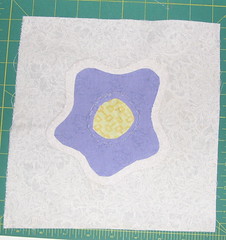
- Square up the finished block and trim to 8.5 inches and you're done ;-)
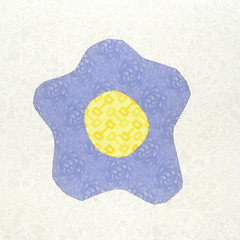
This block was sewn with clear mono-filament using the blind hem stitch.
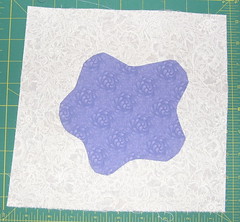
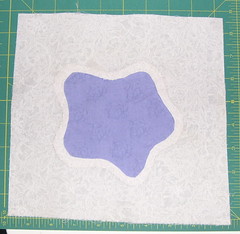

2 comments:
Great instructions, especially the clear photos. Do you do this for fun or profit? Rebecca www.cwquilts.com
Great instructions, especially the clear photos. Do you do this for fun or profit? Rebecca www.cwquilts.com
Post a Comment